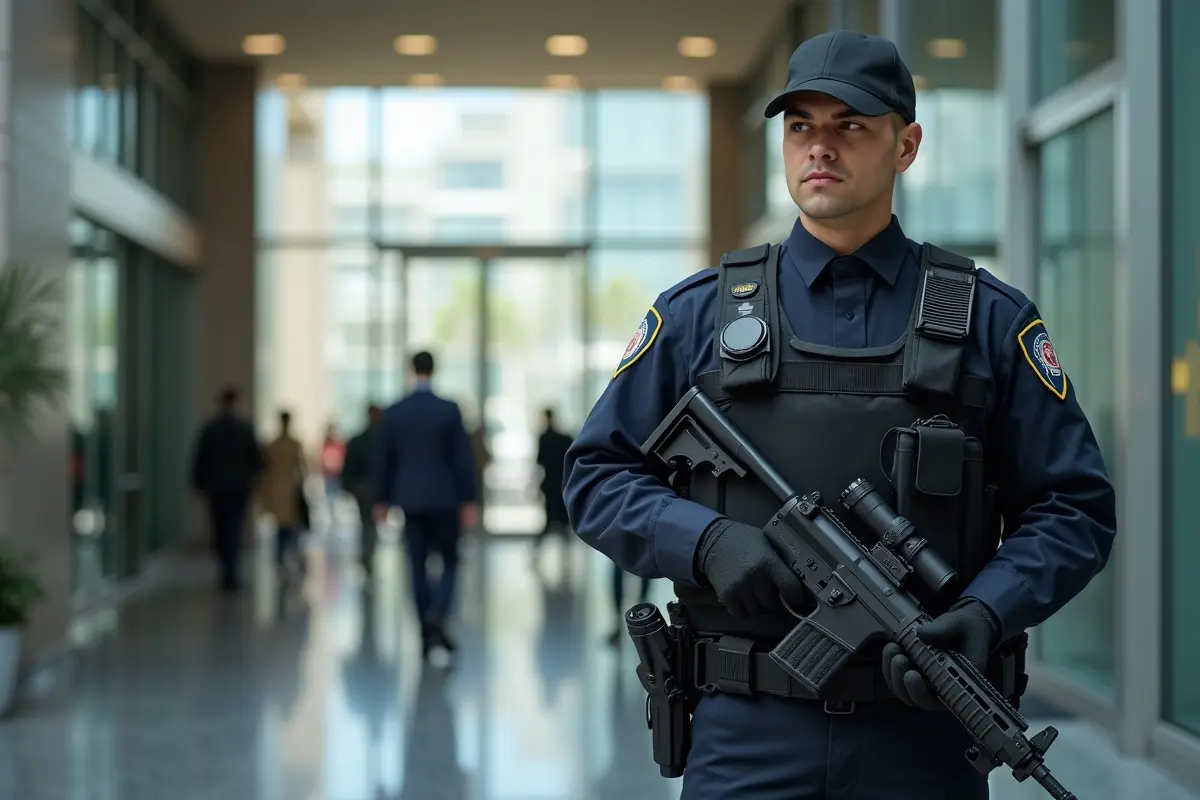Security challenges today have pressed institutions and businesses to evolve their strategies for protection and preparedness. The presence of armed security officers—once limited primarily to government and high-risk facilities—now extends into schools, hospitals, corporations, and retail establishments. As communities across the United States and other countries grow more concerned about public safety, the employment of armed security has increased not only in traditional venues but in unexpected settings as well.
This widespread adoption is not just a reaction to high-profile incidents but part of a deeper commitment to safeguarding people, assets, and sensitive information against increasingly sophisticated threats. This shift is driven by growing awareness of threats and the need for a visible deterrent against violent incidents or property crime.
Today’s armed security officers are expected not only to respond to emergencies but also to act as proactive guardians who support safe environments for learning, work, and recreation. Their evolving role underscores the vital importance of rigorous selection, ongoing training, clear rules of engagement, and ethical leadership to ensure both security and community trust. As they become more integrated with technology and law enforcement, the expectations for their expertise and professionalism continue to rise.
Armed Security in Educational Institutions
The issue of security in educational settings has become a significant point of policy debate in recent years. Research from the National Center for Education Statistics reveals that armed security officer presence in public schools jumped from 31% in 2005-06 to 43% in 2015-16, with expectations that the trend will continue as concerns over student safety rise.
Administrators turn to armed professionals to deter or respond swiftly to dangerous incidents, providing peace of mind for parents and staff amid regular reports of school shootings and outbreaks of violence. These officers often work hand-in-hand with school resource and local police, participating in drills, preparedness training, and safety audits. Their visible presence alone can cause potential perpetrators to rethink their intentions.
Still, schools nationwide grapple with the balance between safety and community trust. While the addition of armed security can offer reassurance and a rapid response capability, some educators and parents worry that the visible presence of firearms may impact students’ sense of psychological safety or disproportionately affect minority students.
Critics argue that militarizing school environments could undermine educational missions or foster adversarial relationships between students and authority figures. Careful planning, transparency, and ongoing dialogue with school communities are key to maximizing benefits and minimizing unintended consequences. This means not only explaining the goals and limitations of armed roles but also involving students, teachers, and families in policy development.
Training and Guidelines: A Critical Need
Uniform training and clear operational guidelines remain critical challenges for the deployment of armed school security officers and their counterparts in other sectors. States and districts often have widely differing requirements. For example, Connecticut mandates a single school safety training session for armed officers, which critics argue falls well short of comprehensive preparation.
Without national standards, disparities arise in how officers are selected, vetted, and empowered, leading to inconsistencies that can erode public confidence. Policymakers and security experts continue to call for more robust, standardized training protocols to address not only firearms proficiency and the legal aspects of weapons use, but also conflict de-escalation, mental health recognition, communication, cultural awareness, and coordination with law enforcement.
Effective training programs should include scenario-based exercises, ethics modules, regular firearms requalification, medical first aid, and ongoing professional development. Furthermore, clear operational guidelines must be spelled out, with well-defined restrictions and use-of-force continuums that reduce the risk of escalation and legal liability. The goal is to ensure that armed security officers become reliable partners in safety—capable of discerning when to intervene and how to do so with minimal risk to all parties involved.
Technological Integration in Security Operations
Innovations in technology are transforming the way armed security officers operate on a day-to-day basis. Modern security teams increasingly rely on digital surveillance, real-time communication networks, and emerging technologies such as drones and artificial intelligence to monitor expansive campuses and business complexes.
These advancements extend an officer’s reach, allowing threats to be detected before they escalate. For instance, advanced access control systems and video analytics can flag unusual activities or unauthorized access points in real time, providing valuable intelligence and enabling officers to identify potential threats and coordinate an appropriate response more quickly.
Technology also enhances officer accountability and transparency. Body-worn cameras, GPS tracking, and centralized reporting tools set new standards for incident documentation, evidence collection, and compliance with organizational protocols. This modern toolkit not only increases effectiveness but reassures stakeholders that enforcement actions are recorded and subject to review.
However, successful technological integration demands regular training and clear policies to protect privacy, address cyber vulnerabilities, and ensure security staff can interpret and act appropriately on digital intelligence.
Armed Security in Private Enterprises
The private sector has embraced the strategic value of both armed and unarmed security officers to safeguard personnel, data, and property. Factors influencing the decision to employ armed security include the sensitivity of assets, historical risk, and employee perceptions of safety versus intimidation.
Businesses operating in high-risk industries, such as financial services, healthcare, logistics, and energy infrastructure, often feel compelled to invest in armed security as part of their broader risk management plans. Effective programs require thorough background checks, psychological evaluations, ongoing professional development, and clear communication with staff about the role and responsibilities of security personnel.
Private enterprises also face increasing regulatory scrutiny and must navigate complex federal, state, and local laws governing weapons possession, use of force, and incident reporting requirements. Failure to comply can result in legal penalties, reputational harm, and increased liability for the business. Partnering with professional security agencies helps companies avoid pitfalls and implement best practices, ensuring a safer and more predictable environment for employees, customers, and other stakeholders.
Global Perspectives on Armed Security
Armed security practices differ significantly around the world, shaped by local threats, government policy, and social attitudes toward firearms. In Kenya, for instance, authorities have proposed arming private security guards to protect critical infrastructure, such as airports and energy facilities, allowing law enforcement to focus on wider national security priorities. This approach highlights the potential for private security to play an integral role in national resilience.
However, it also raises questions about training standards, oversight, and the risk of accidental escalation or misuse of force. In several European countries, by contrast, private security guards are generally unarmed, with police retaining primary responsibility for armed intervention.
These differences spotlight not only varying threat landscapes but also broader cultural and political attitudes toward private security, gun ownership, and the role of private industry in safeguarding public life. Understanding these variations helps contextualize policy choices and may inform how other nations approach the growth of armed private security.
Conclusion
As the prevalence of armed security officers continues to grow across education, business, and public spaces, their role must be underpinned by exhaustive training, transparent operational guidelines, and thoughtful engagement with the communities they serve. This complex role requires balancing the promise of new technology with timeless ethical standards and rigorous regulation.
Ultimately, the challenge lies in maximizing the benefits of armed security—providing real protection and peace of mind—while addressing issues of trust, oversight, and social responsibility in a rapidly changing world.




